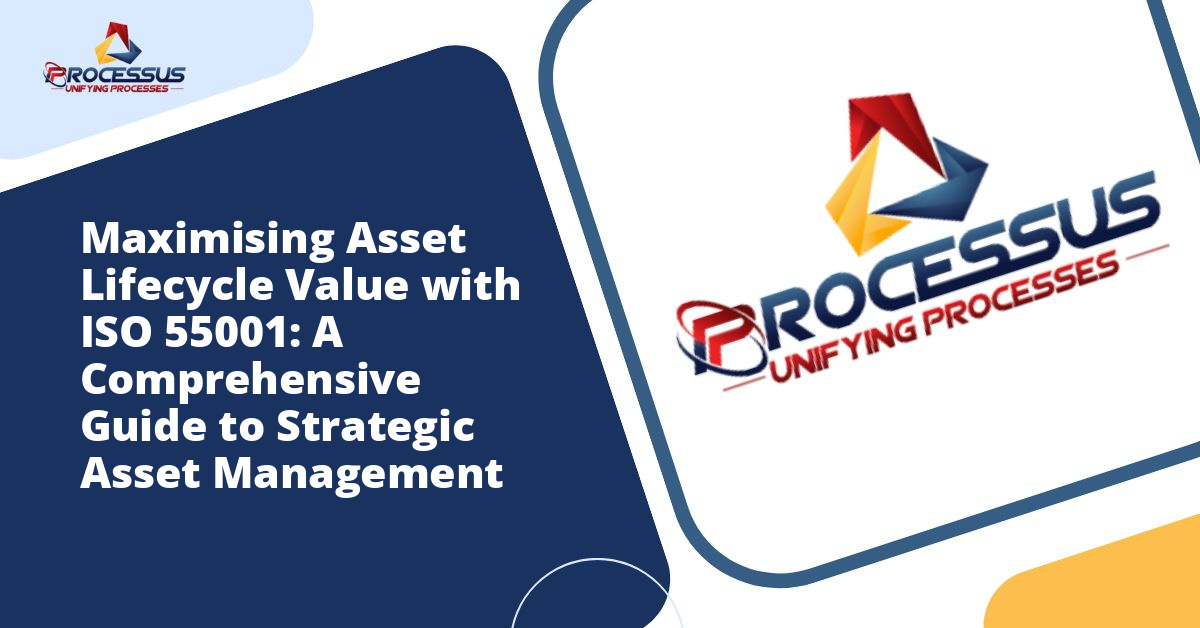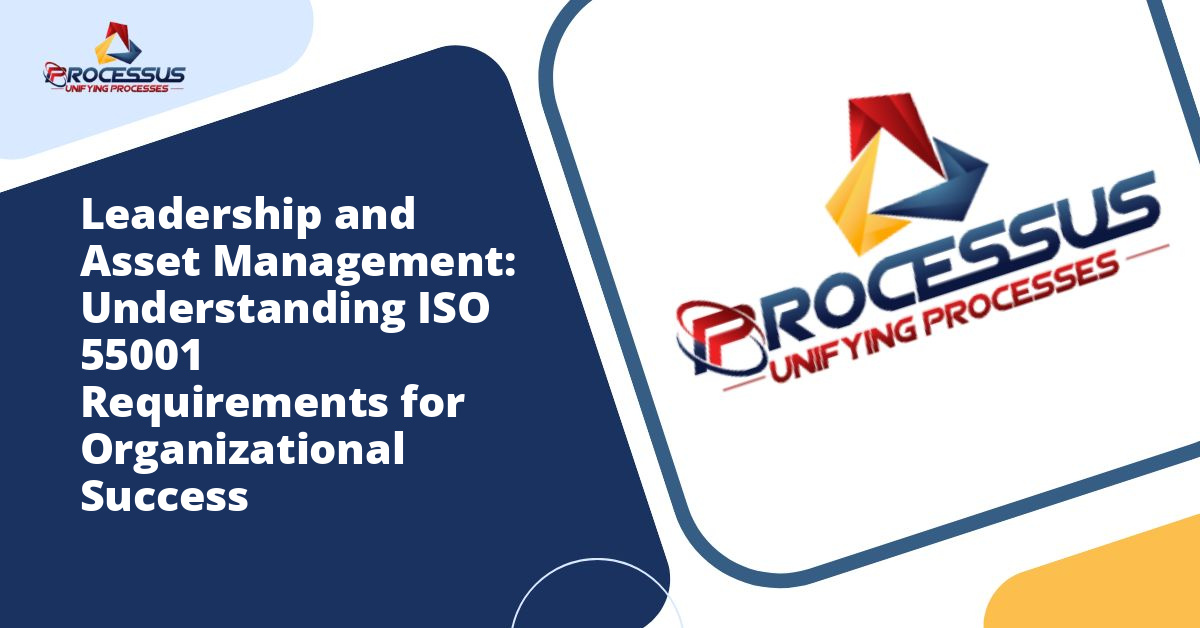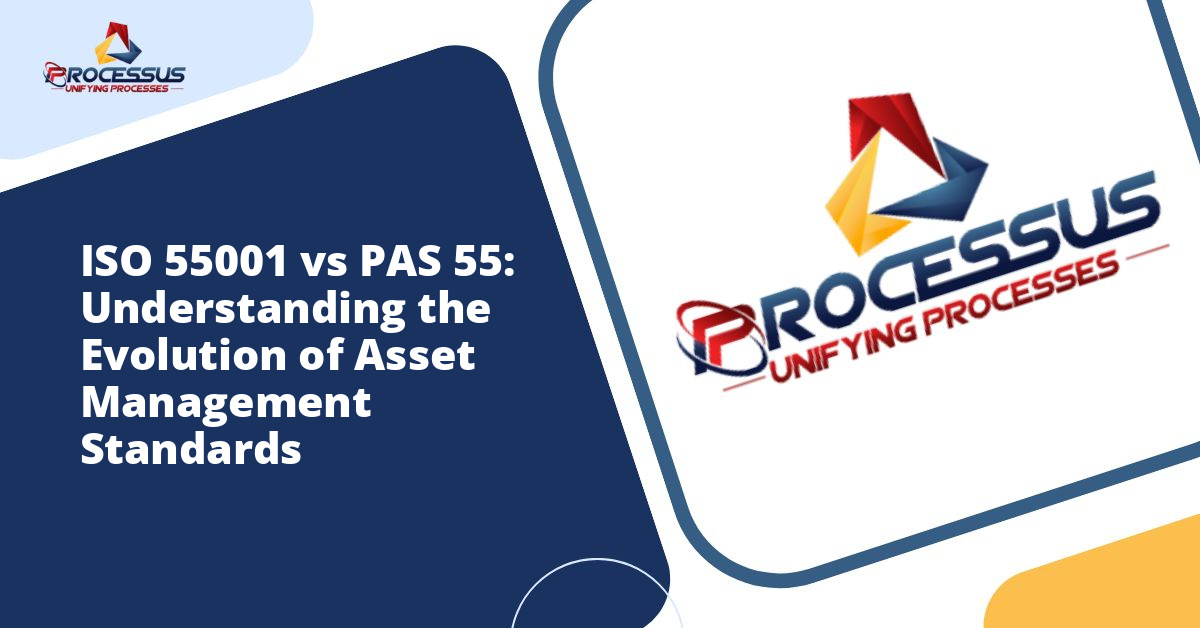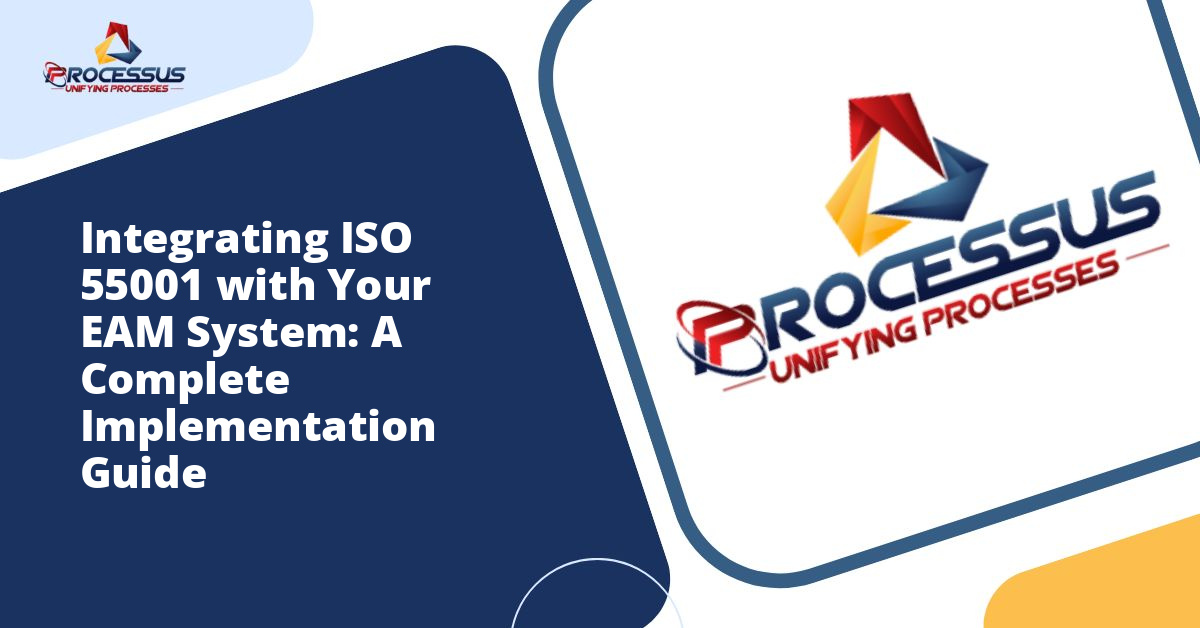In today’s competitive business environment, organizations across all sectors are increasingly recognizing that their physical assets represent significant value that must be carefully managed throughout their entire lifecycle. From manufacturing plants and transportation infrastructure to IT systems and facilities, the way organizations manage their assets can determine the difference between operational excellence and inefficiency. This is where ISO 55001, the international standard for asset management, becomes a game-changer for organizations seeking to maximize the value derived from their assets while minimizing risks and costs.
Understanding ISO 55001 and Its Significance
ISO 55001 is the internationally recognized standard for asset management systems, published by the International Organization for Standardization. This comprehensive framework provides organizations with a structured approach to managing their assets in a way that aligns with strategic objectives, optimizes performance, and delivers sustainable value over time.
The standard applies to all types of assets, whether tangible or intangible, and is relevant to organizations of any size or sector. It provides a systematic methodology for developing, implementing, maintaining, and continually improving an asset management system that supports the achievement of organizational goals while managing risks and opportunities associated with asset ownership and operation.
What makes ISO 55001 particularly valuable is its holistic approach to asset management. Rather than focusing solely on maintenance or replacement schedules, it encourages organizations to consider the entire lifecycle of their assets, from acquisition and operation through to disposal or decommissioning. This comprehensive perspective enables organizations to make informed decisions that balance cost, performance, and risk across the full asset lifecycle.
The Asset Lifecycle: A Journey of Value Creation
To truly maximize asset lifecycle value, organizations must first understand what the asset lifecycle entails. The asset lifecycle encompasses several distinct phases, each presenting unique opportunities for value creation and optimization.
Planning and Acquisition Phase
The journey begins with the planning and acquisition phase, where organizations identify their asset needs based on strategic objectives and operational requirements. During this critical stage, decisions made will have long-lasting implications for the total cost of ownership and the value that assets will deliver over their lifetime.
ISO 55001 emphasizes the importance of comprehensive planning that considers not only the initial acquisition cost but also factors such as operational costs, maintenance requirements, expected performance levels, and eventual disposal considerations. By taking this holistic view from the outset, organizations can make more informed investment decisions that align with their long-term strategic goals.
Deployment and Commissioning Phase
Once assets are acquired, the deployment and commissioning phase ensures that they are properly integrated into existing operations. This phase involves installation, testing, training, and validation to confirm that assets meet specified requirements and are ready to deliver their intended value.
Proper documentation during this phase establishes the baseline for future performance monitoring and creates the foundation for effective asset management throughout the lifecycle. ISO 55001 encourages organizations to develop robust processes for this phase to ensure assets begin their operational life on the right footing.
Operation and Maintenance Phase
The operation and maintenance phase typically represents the longest period in the asset lifecycle and is where the majority of value is either created or lost. During this phase, assets must perform reliably to meet operational demands while being maintained in a cost-effective manner that preserves their capability and extends their useful life.
ISO 55001 promotes a strategic approach to maintenance that balances reactive, preventive, and predictive strategies based on asset criticality, failure consequences, and cost-benefit considerations. This risk-based approach ensures that maintenance resources are allocated efficiently to protect and enhance asset value.
Renewal and Disposal Phase
Eventually, all assets reach the end of their useful life and must be renewed, replaced, or disposed of. The renewal and disposal phase involves making strategic decisions about whether to refurbish, upgrade, replace, or decommission assets based on their condition, performance, and alignment with current and future organizational needs.
By following ISO 55001 principles, organizations can plan for this phase well in advance, ensuring that transitions are managed smoothly with minimal disruption to operations. Proper disposal or repurposing of assets can also recover value and ensure compliance with environmental and regulatory requirements.
Key Principles of ISO 55001 for Maximizing Asset Value
ISO 55001 is built upon several fundamental principles that guide organizations toward optimal asset management practices. Understanding and applying these principles is essential for maximizing asset lifecycle value.
Value-Driven Decision Making
At the heart of ISO 55001 is the principle that asset management decisions should be driven by the value they create for the organization and its stakeholders. This means considering not only financial returns but also factors such as safety, environmental impact, reputation, and social responsibility.
Organizations implementing ISO 55001 develop clear criteria for evaluating the value of their assets and the decisions made about them. This value-based approach ensures that resources are allocated to the assets and activities that contribute most significantly to achieving organizational objectives.
Alignment with Organizational Strategy
Effective asset management cannot exist in isolation from broader organizational strategy. ISO 55001 requires that asset management objectives and plans be directly aligned with strategic organizational goals, ensuring that asset-related decisions support the achievement of desired outcomes.
This alignment creates a clear line of sight from daily asset management activities to strategic objectives, enabling organizations to demonstrate how their asset management practices contribute to overall success and competitive advantage.
Risk-Based Thinking
Risk management is integral to maximizing asset lifecycle value. ISO 55001 promotes a risk-based approach to asset management that considers both the likelihood and consequences of asset failure, performance degradation, or other adverse events.
By systematically identifying, assessing, and managing risks throughout the asset lifecycle, organizations can make informed decisions about where to invest resources, how to prioritize activities, and which mitigation strategies to employ. This approach helps prevent costly failures while avoiding over-investment in low-risk areas.
Systematic and Coordinated Approach
ISO 55001 emphasizes the importance of systematic processes and coordination across different functions and levels of the organization. Asset management involves numerous stakeholders, from frontline operators and maintenance technicians to senior executives and financial planners.
A coordinated approach ensures that everyone works toward common objectives with clear roles, responsibilities, and communication channels. This systematic methodology reduces duplication of effort, eliminates gaps in coverage, and creates synergies that enhance overall effectiveness.
Implementing ISO 55001: A Roadmap for Success
Implementing ISO 55001 requires careful planning and commitment from all levels of the organization. While the journey may be challenging, the rewards in terms of improved asset performance and value realization make the effort worthwhile.
Leadership Commitment and Governance
Successful implementation begins with strong leadership commitment. Senior management must champion the asset management initiative, allocating necessary resources and demonstrating visible support for the changes required.
Establishing clear governance structures for asset management ensures accountability and provides a framework for decision-making. This includes defining roles and responsibilities, establishing asset management policies, and creating mechanisms for monitoring and reviewing performance.
Gap Analysis and Planning
Before implementing ISO 55001, organizations should conduct a thorough gap analysis to understand their current state of asset management maturity and identify areas requiring improvement. This assessment provides a baseline for measuring progress and helps prioritize implementation efforts.
Based on the gap analysis, organizations develop a detailed implementation plan that outlines specific actions, timelines, responsibilities, and resource requirements. This plan should be realistic and phased, allowing for gradual improvement rather than attempting to achieve perfection immediately.
Developing Asset Management Plans
Central to ISO 55001 implementation is the development of comprehensive asset management plans that translate organizational objectives into specific asset management activities. These plans should cover all asset types and lifecycle phases, detailing how assets will be managed to deliver required outcomes.
Effective asset management plans are based on thorough understanding of asset condition, performance, risks, and opportunities. They establish clear performance targets, specify required resources, and outline the methods and processes to be employed.
Building Capability and Competence
People are fundamental to successful asset management. Organizations must invest in building the capability and competence of their workforce through training, development, and knowledge sharing.
This includes not only technical skills related to asset operation and maintenance but also broader competencies in areas such as risk management, financial analysis, and strategic planning. Creating a culture that values asset management excellence is equally important as developing individual skills.
Implementing Supporting Systems and Processes
ISO 55001 implementation typically requires new or enhanced systems and processes to support effective asset management. This may include computerized maintenance management systems, asset registers, condition monitoring technologies, and performance reporting tools.
The key is to select and implement systems that genuinely support decision-making and value creation rather than simply generating data. Integration between different systems is crucial to provide a holistic view of asset performance and enable coordinated management.
Benefits of ISO 55001 Implementation
Organizations that successfully implement ISO 55001 can expect to realize numerous benefits across multiple dimensions of performance.
Financial Performance Improvement
One of the most tangible benefits of ISO 55001 implementation is improved financial performance. By optimizing asset utilization, reducing unplanned downtime, and making more informed investment decisions, organizations can significantly reduce the total cost of asset ownership while maximizing returns.
Better asset management also improves cash flow predictability by reducing unexpected expenditures and enabling more accurate forecasting of asset-related costs. This financial visibility supports better budgeting and resource allocation across the organization.
Enhanced Operational Reliability
ISO 55001 promotes practices that enhance asset reliability and availability, leading to more consistent operational performance. Fewer breakdowns and disruptions mean that organizations can better meet customer commitments, maintain production schedules, and deliver services as promised.
This improved reliability also reduces the stress and firefighting that often characterize reactive asset management approaches, allowing teams to work more efficiently and focus on continuous improvement rather than crisis management.
Better Risk Management
The risk-based approach embedded in ISO 55001 helps organizations identify and manage asset-related risks more effectively. This includes risks to safety, environmental compliance, operational continuity, and financial performance.
By proactively addressing these risks, organizations reduce the likelihood of costly incidents, regulatory violations, and reputational damage. This risk mitigation contributes directly to protecting and enhancing organizational value.
Improved Decision Making
ISO 55001 implementation creates better information flows and decision-making frameworks that enable organizations to make more informed choices about their assets. From routine maintenance decisions to major capital investments, the quality of decision-making improves when guided by clear criteria and reliable data.
This improved decision-making capability extends across all levels of the organization, from tactical operational decisions to strategic portfolio choices, creating value through better allocation of resources and more effective prioritization.
Stakeholder Confidence
Certification to ISO 55001 provides external validation of an organization’s asset management capabilities, building confidence among stakeholders including customers, investors, regulators, and partners. This confidence can translate into competitive advantages such as preferential supplier status, improved financing terms, and enhanced reputation.
Demonstrating commitment to recognized best practices in asset management signals organizational maturity and professionalism that differentiates leaders from laggards in the marketplace.
Challenges and Success Factors
While the benefits of ISO 55001 are substantial, organizations should be aware of common challenges and the factors that contribute to successful implementation.
Common Implementation Challenges
Resistance to change is perhaps the most common challenge organizations face when implementing ISO 55001. Established ways of working, even if suboptimal, can be deeply ingrained in organizational culture. Overcoming this resistance requires clear communication about the reasons for change and the benefits it will bring.
Data quality and availability often present significant challenges. Effective asset management requires reliable information about asset condition, performance, and costs. Many organizations discover that their existing data is incomplete, inconsistent, or unreliable, necessitating substantial effort to establish proper data management practices.
Resource constraints, particularly during the implementation phase, can slow progress and test organizational commitment. Balancing the demands of implementing new asset management practices with ongoing operational requirements requires careful planning and realistic expectations.
Critical Success Factors
Sustained leadership commitment throughout the implementation journey is perhaps the most critical success factor. When challenges arise, strong leadership support ensures that the organization perseveres rather than abandoning the initiative.
Taking a phased and pragmatic approach to implementation allows organizations to build momentum through early wins while gradually expanding the scope and sophistication of their asset management practices. Attempting to achieve perfection immediately often leads to overwhelming complexity and discouragement.
Engaging stakeholders across the organization ensures buy-in and leverages diverse perspectives and expertise. Asset management touches virtually every function in most organizations, and implementation success depends on collaboration across traditional boundaries.
Focusing on value rather than mere compliance helps maintain enthusiasm and demonstrates the practical benefits of ISO 55001. While certification may be an objective, the real goal should be improved organizational performance through better asset management.
The Future of Asset Management
As technology continues to evolve and business environments become increasingly complex, asset management practices will continue to advance. ISO 55001 provides a solid foundation that organizations can build upon to leverage emerging opportunities.
Digital technologies such as Internet of Things sensors, artificial intelligence, and predictive analytics are transforming what is possible in asset management. These technologies enable more precise monitoring of asset condition, earlier detection of potential failures, and more sophisticated optimization of maintenance strategies.
Sustainability considerations are becoming increasingly important in asset management decisions. Organizations are recognizing that maximizing asset lifecycle value must include consideration of environmental impacts, circular economy principles, and social responsibility alongside traditional financial metrics.
The integration of asset management with enterprise risk management, business continuity planning, and strategic planning will deepen, creating more holistic approaches to organizational resilience and value creation.
Conclusion
Maximizing asset lifecycle value through ISO 55001 implementation represents a strategic opportunity for organizations seeking to improve performance, reduce risks, and create sustainable competitive advantage. By providing a comprehensive framework for managing assets throughout their lifecycle, ISO 55001 enables organizations to make better decisions, optimize resource allocation, and align asset management with strategic objectives.
The journey toward ISO 55001 certification and asset management excellence requires commitment, investment, and perseverance. However, organizations that embrace this journey discover that the benefits extend far beyond improved asset performance to encompass enhanced financial results, stronger stakeholder relationships, and greater organizational capability.
Whether your organization manages a fleet of vehicles, operates complex industrial facilities, maintains critical infrastructure, or provides technology services, the principles and practices embodied in ISO 55001 can help unlock the full value potential of your assets. The question is not whether to pursue asset management excellence, but rather how quickly you can begin the journey toward realizing the substantial benefits that await.
In an era where competitive advantage increasingly depends on operational excellence and efficient resource utilization, ISO 55001 provides the roadmap organizations need to transform their asset management practices and position themselves for long-term success. The time to act is now, and the potential rewards for doing so are substantial and enduring.







